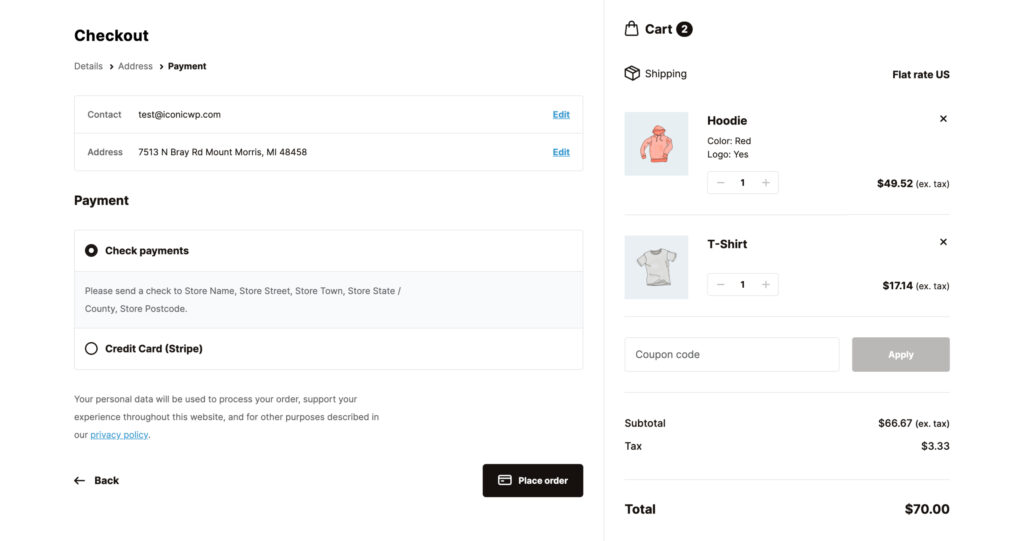If you’re navigating the world of online sales, understanding ecommerce metrics is your roadmap to success.
The ecommerce landscape, always on the move, can seem daunting, especially when figuring out which numbers deserve your attention.
👋 That’s where this post comes in handy. We’ve zeroed in on the top five ecommerce metrics to keep an eye on in 2024.
These key figures can illuminate your understanding of your customers, streamline your operations, and boost your sales. So, whether you’re an old hand at ecommerce or a newcomer just dipping your toes, this blog post is your guide.
Curious? These are the metrics we’ll be covering:
- Customer retention rate (CRR).
- Cart abandonment rate.
- Conversion rate.
- Average order value (AOV).
- Customer acquisition cost (CAC).
In the following sections, we’ll break down each metric, one by one, so you can walk away knowing the top five most important ecommerce metrics.
Let’s dive right into these essential ecommerce metrics and set your business up for success!
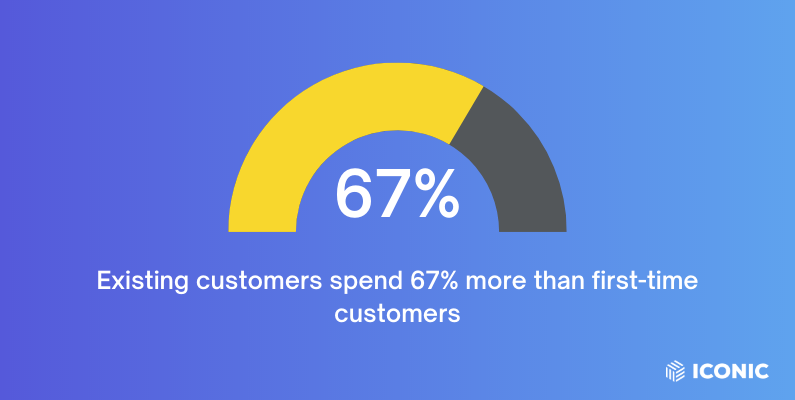
Metric #1: Customer retention rate
We’re putting this metric at the top, as it’s one of the essential ecommerce metrics for your ecommerce store.
There are two reasons for this:
- Existing customers spend more than new customers (67% more).
- The cost of finding a new customer is five to 25 times higher than retaining one.
With such strong numbers on its side, it’s no wonder we recommend you prioritize this metric. Improving your customer retention rate (CRR) can help lower your cost per action (CPA) in the long run. Making your marketing efforts more cost-effective (two for the price of one!).
Here’s a more in-depth look at what this metric is all about.
What is ecommerce customer retention?
Ultimately, what you hope for is that first-time customers become repeat customers. Repeat customers will recommend your products and store, boosting your overall ecommerce KPIs (key performance indicators).
Customer retention is when existing customers return and make repeat purchases. Retaining customers is especially crucial in the ecommerce industry (that unsubscribe button is too easy to hit!).
Keeping a customer engaged with your store also increases customer loyalty. With increased customer loyalty, you’ll notice more frequent purchases and increased profitability.
📈 Research shows that increasing customer retention by just 5% can lead to a 25-95% profit increase. How does that sound?

How to determine your ecommerce customer retention rate?
Calculating your customer retention rate can be done with a simple formula. Here’s how:
Customer Retention Rate = ((Number of customers at the end of the period – Number of new customers during the period) / Number of customers at the beginning of the period) x 100
For example, let’s say your online store had 100 customers at the beginning of the month, acquired 20 new customers, and had 110 customers by the end.
Your customer retention rate would be: ((110 – 20) / 100) x 100 = 90%
In this example, your store has a monthly CRR of 90%. If this high CRR persists for a long period of time, it indicates that you’re doing a great job retaining customers.
As a result, the Customer Lifetime Value (CLV) increases as loyal customers bring in more revenue than new customers. So then, how can you improve this important metric?
Strategies to improve ecommerce customer retention
To boost your customer retention rate, use the following strategies:
- Personalize customer experiences: Tailor your on-site ecommerce marketing to individual customers. Identify what they like so you can personalize your product recommendations. Iconic Sales Booster for WooCommerce is a great plugin to help you achieve this. It will allow you to add product recommendations throughout your entire ecommerce website.
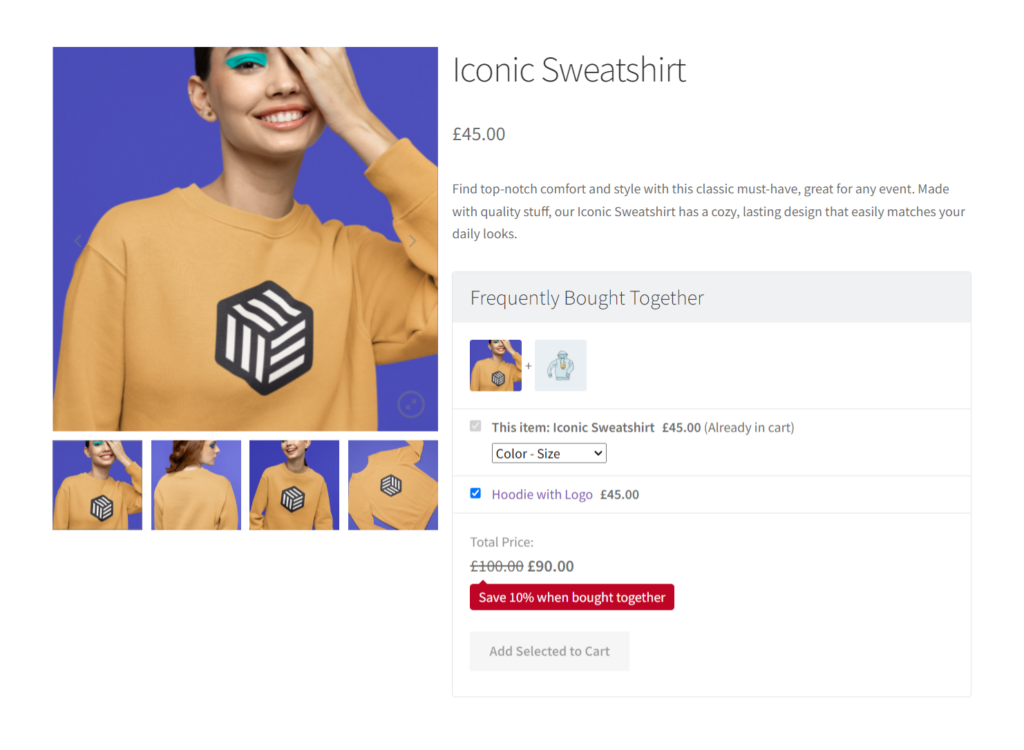
- Offer loyalty programs: Reward your loyal customers with special discounts, offers, or early access to new products. You can also invite them to a referral program to boost your customer base. The more loyal your customers are, the higher your net promoter score.
- Provide excellent customer support: Top customer service attracts repeat purchases (89% of customers say they will return after a positive customer service experience). Improve customer satisfaction by adding valuable content to the customer’s My Account page. You can easily make this happen with the WooCommerce Account Pages plugin.
Turn your average customer into a loyal one (instead of a detractor that impacts your store’s net promoter score). We highly recommend you make this metric a priority.
👋 Want some more in-depth strategies to improve customer retention? Check out our ecommerce retention rate guide.
Metric #2: Cart abandonment rate
The second most important ecommerce metric is the cart abandonment rate. It goes without saying that if you improve your CRR, your cart abandonment rate will go down.
Reducing this metric can significantly contribute to your online store’s success. It shows that you offer a streamlined, smooth customer journey that ends in order completion.
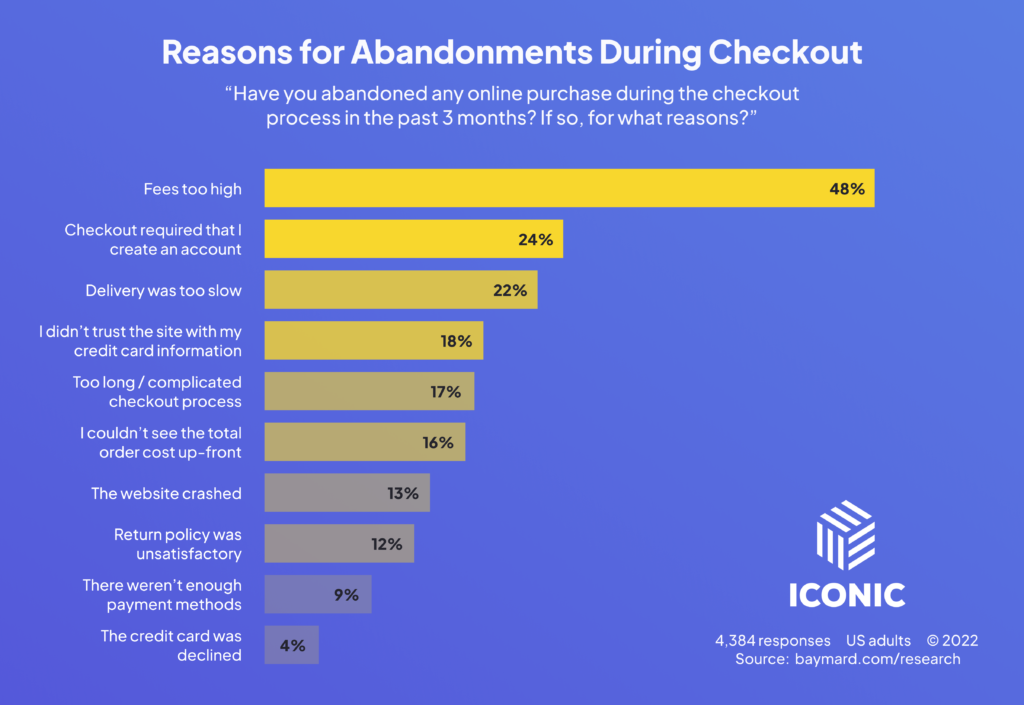
What is the cart abandonment rate?
If you’ve ever browsed an online store, clicked the “add to cart” button (maybe for several items), and never completed your order, you’ve contributed to the cart abandonment rate.
It happens to everyone. Maybe the shipping fees were too high, or you decided at the moment to cut back on your spending habits.
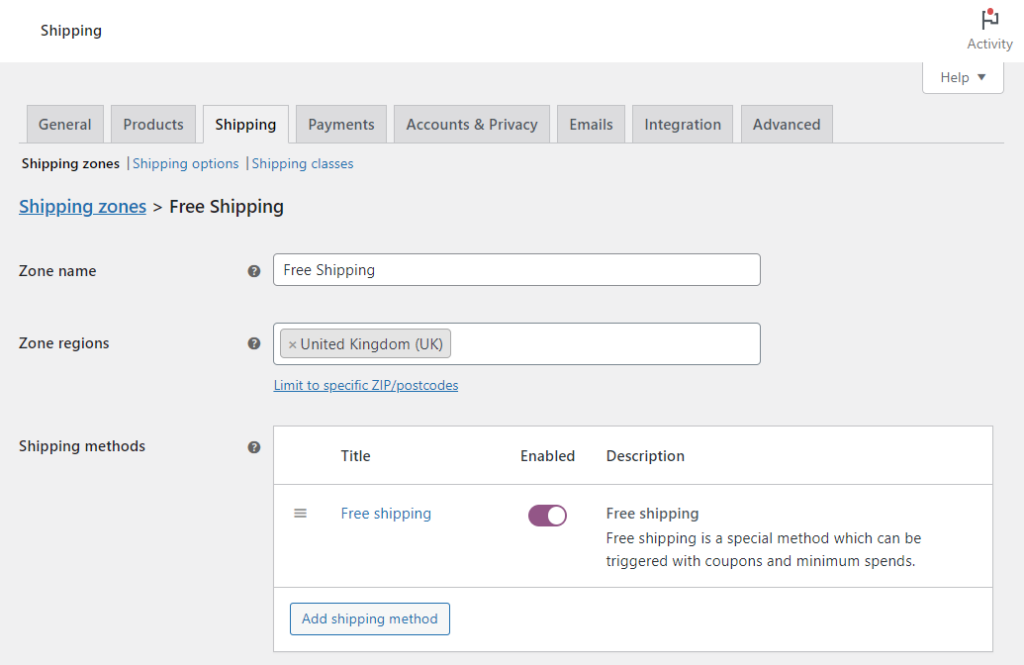
The cart abandonment rate refers to the percentage of shoppers who add items to their online shopping cart but exit the website without finishing the purchase. A high cart abandonment rate can significantly negatively impact your online store’s sales and overall revenue.
By understanding the factors that create cart abandonment, you can reduce it and increase sales conversions.
Here’s how you can calculate yours.
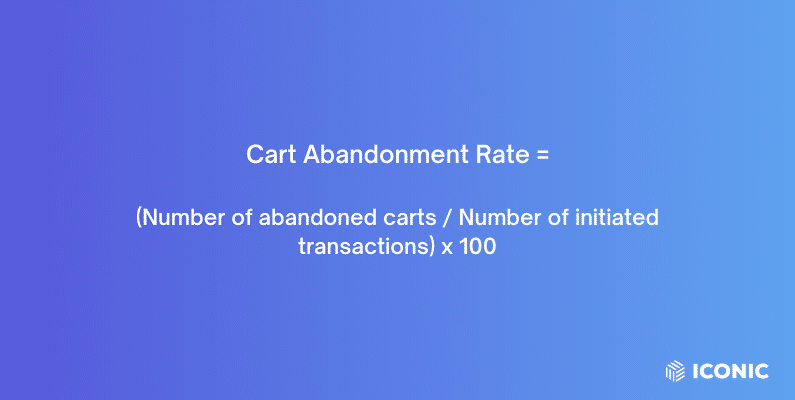
How to calculate your cart abandonment rate?
Calculating your cart abandonment rate is straightforward. Use the following formula:
Cart Abandonment Rate = (Number of abandoned carts / Number of initiated transactions) x 100
For example, let’s say your store had 200 initiated transactions and 50 abandoned carts in a given period.
Your cart abandonment rate would be: (50 / 200) x 100 = 25%
In this scenario, you’re looking good. Typically, on average, the shopping cart abandonment rate is 70%. If your cart abandonment rate is higher than average, or if you want to beat the statistic, there are a few ways to go about it.
Effective tactics to reduce cart abandonment
Here are some practical strategies to reduce cart abandonment in your online store:
- Optimize the checkout process: Here are a few ways to make it easy for customers to pay: reduce the number of steps, enable guest checkout (24% of people leave because they’re asked to make an account), and offer autofill options.
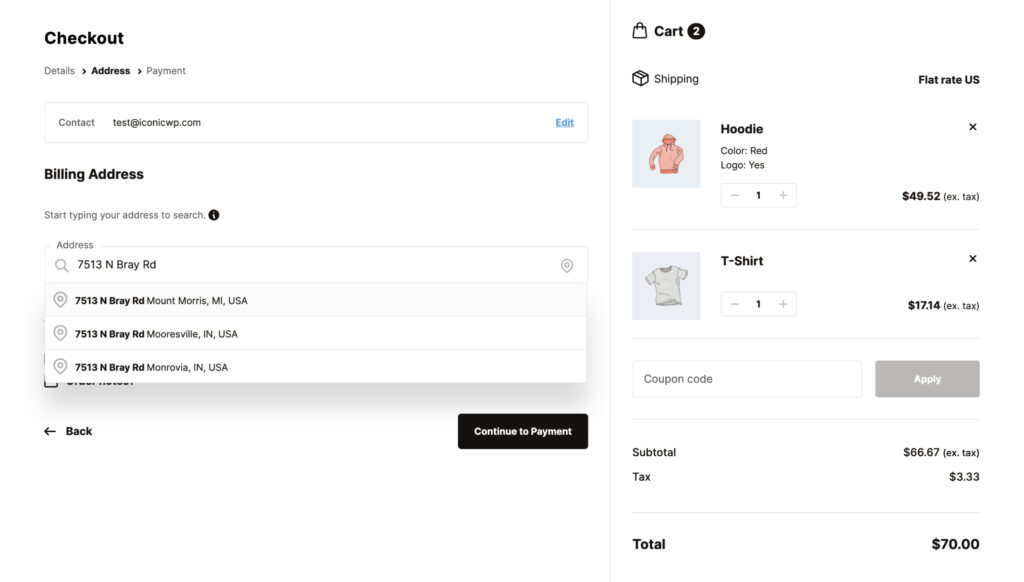
- Offer multiple payment options: Cater to customers’ preferences. Give them a variety of payment methods, such as credit cards, PayPal, and other digital wallets.

- Send abandoned cart reminders: This is a no-brainer, as the average open rate of an abandoned cart email is 45%, with a 10% conversion rate attached to it. Automate your email campaigns to remind customers about their abandoned carts.
- Use Flux Checkout for WooCommerce: The Flux Checkout plugin is a powerful tool to help reduce cart abandonment. This plugin optimizes the checkout process by offering a single-page, mobile-friendly experience. Here are some of the ways Flux Checkout can help:
- Multi-step checkout: It displays all the required fields in multiple steps. This makes it easy for customers to complete their purchases because they’re walked through the process.
- Mobile optimization: It creates a user-friendly checkout experience on mobile devices. This is essential given the growing number of mobile shoppers.
- Customization options: It offers various customization options. You can tailor the checkout experience to your store’s branding and design.
Flux Checkout for WooCommerce
Prevent abandoned carts with a slick multi-step checkout experience, designed for your customer’s device.
If you focus on driving website traffic, improving user experience, and boosting social media engagement but forget the checkout process, you’re missing out on your online business’s full potential.
👋 Want some more in-depth strategies to reduce cart abandonment? Check out our checkout abandonment guide.
Metric #3: Ecommerce conversion rate
Do you have a high click-through rate on your ads or website, but actual sales aren’t going up? You might need to improve your conversion rate (this process is called Conversion Rate Optimization).
Optimizing the conversion rate will give you a higher customer lifetime value (CLV), lower customer acquisition costs (CAC), and increase sales and revenue.
It’s a positive domino effect.
What is ecommerce conversion rate?
The ecommerce conversion rate is the percentage of visitors to your online store who do what you want them to do, such as buying your product. A high conversion rate shows that your website is turning visitors into customers, while a low rate suggests room for improvement.
There isn’t a universal benchmark for a “good” conversion rate. It highly depends on your business’s nature, your price points, and where your website traffic is coming from.
But everyone can agree that every ecommerce business can improve its conversion rate.

How to calculate your conversion rate?
Calculating your conversion rate is simple (you can also find it in your Google Analytics). Use the following formula:
Conversion Rate = (Number of conversions / Number of visitors) x 100
For example, let’s say your store had 10,000 visitors and 200 conversions in a given period.
Your conversion rate would be: (200 / 10,000) x 100 = 2%
According to industry leaders, ecommerce conversion rates are around 2.5-3%, so your online store would be just below average.
Tips for improving your conversion rate
Here are some strategies to improve your conversion rate and gain ecommerce sales.
- Optimize website design: Keep your website user-friendly, visually appealing (more product images mean higher consumer trust, which equals greater sales), and easy to navigate. Use the WooThumbs for WooCommerce plugin to customize your product image gallery and increase conversions.
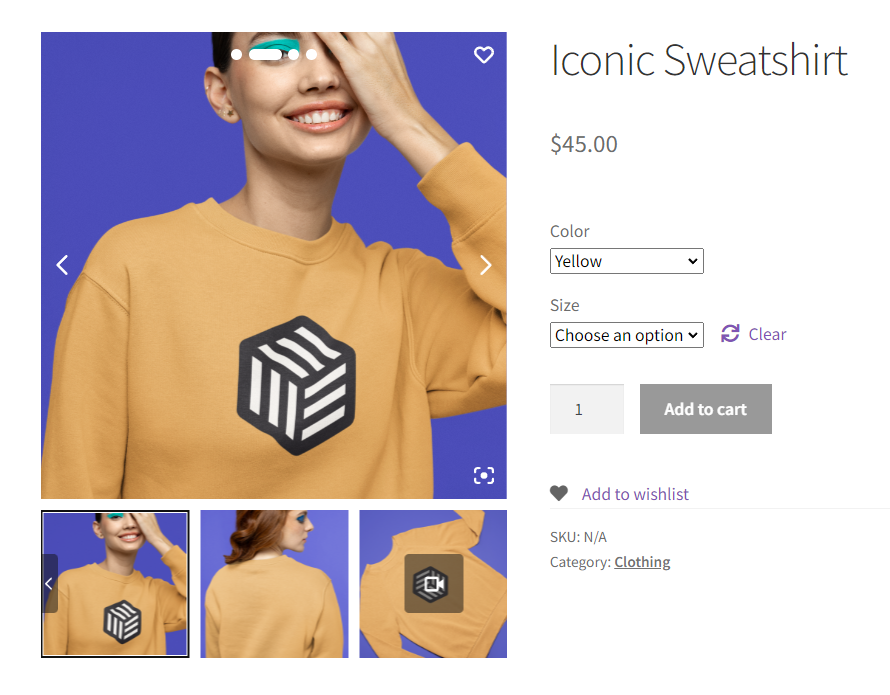
- Use compelling product descriptions: Add detailed product descriptions to highlight the benefits and features of your products. Let your customers preview the product details without leaving the category or shop page with the WooCommerce Quickview plugin.

- Leverage social proof: Use digital marketing to your advantage. Display customer reviews, testimonials, and ratings. This builds trust and credibility with potential buyers.
- Improve the checkout process: While improving the checkout process improves the cart abandonment rate, it can also boost a store’s conversions by 35%. Customers want a pain-free experience when they’re ready to purchase. Do this with Flux Checkout for WooCommerce.
If you have a high number of people visiting your ecommerce site, but your total revenue isn’t going up, you need to take advantage of the above strategies.
👋 Want some more in-depth strategies to improve conversion rate? Check out our conversion rate guide.
Metric #4: Average order value
The fourth ecommerce metric to focus on is the average order value (AOV). If your total number of orders is going up, but you’re not seeing a significant increase in your total sales number, then you might have an AOV problem.

What is the average order value?
The average order value is the average amount of money a customer spends per trip in your online store.
This metric explains your customers’ purchasing behavior and identifies opportunities to increase revenue. A higher AOV means that customers spend more on each order, which can directly impact your store’s bottom line.
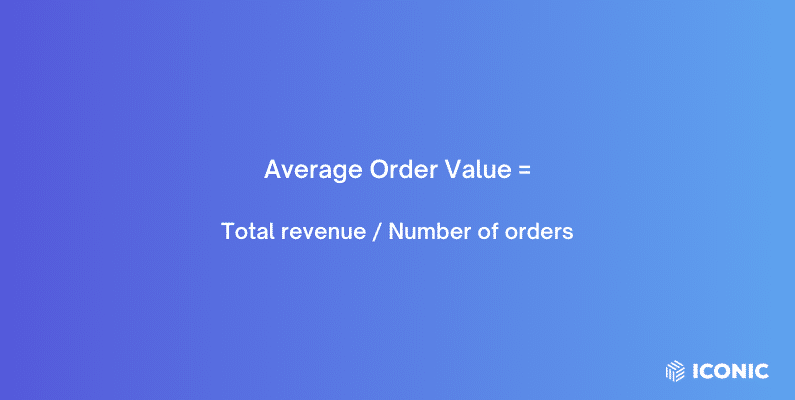
How to calculate your average order value?
Calculating your average order value is straightforward. Use the following formula:
Average Order Value = Total revenue / Number of orders
For example, let’s say your store generated $10,000 in revenue from 200 orders in a given period.
Your average order value would be: $10,000 / 200 = $50
This metric varies significantly across industries, but you can check out the benchmark for yours and see where you land.
Strategies to increase your average order value
Here are some strategies to boost your average order value:
- Offer product bundles: Add complementary products into a special offer. This encourages customers to spend more. Use the WooCommerce Bundled Products plugin to create irresistible product bundles and increase your AOV.
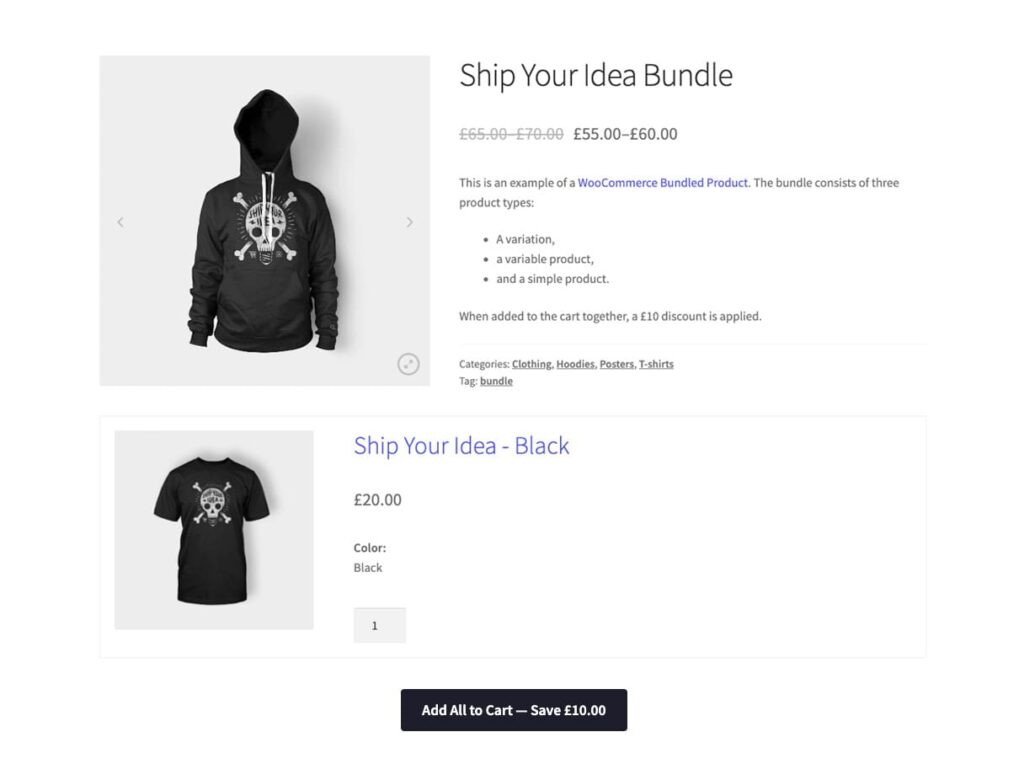
- Upsell and cross-sell: Promote higher-priced products or related items to encourage customers to add more products to their cart. Use the Iconic Sales Booster for WooCommerce plugin to use this strategy fully.
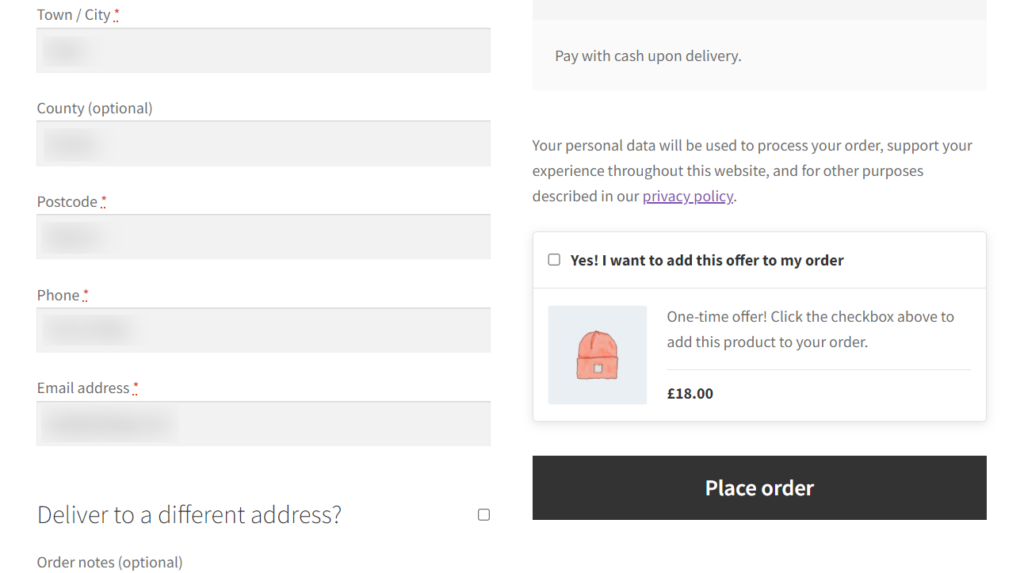
- Provide free shipping thresholds: For orders above a specific value, offer free shipping. This helps customers spend more to qualify for the benefit.
Iconic Sales Booster for WooCommerce
Use proven cross-selling techniques to increase the average order value of your store.
👋 Want some more in-depth strategies to improve your average order value? Check out our average order value guide.
Metric #5: Customer acquisition cost
The last ecommerce metric you must track is customer acquisition cost (CAC). One way is to consider your cost per action (CPA) to convert one new customer to your online store.
What is the customer acquisition cost?
Customer acquisition cost refers to the total cost of acquiring a new customer. This includes marketing and sales expenses. As mentioned earlier, it is costly to acquire a new customer. Much more so than keeping a customer.
A high CAC may indicate that your marketing strategies are not cost-effective. A low CAC suggests that your marketing campaigns efficiently drive new customer acquisitions.
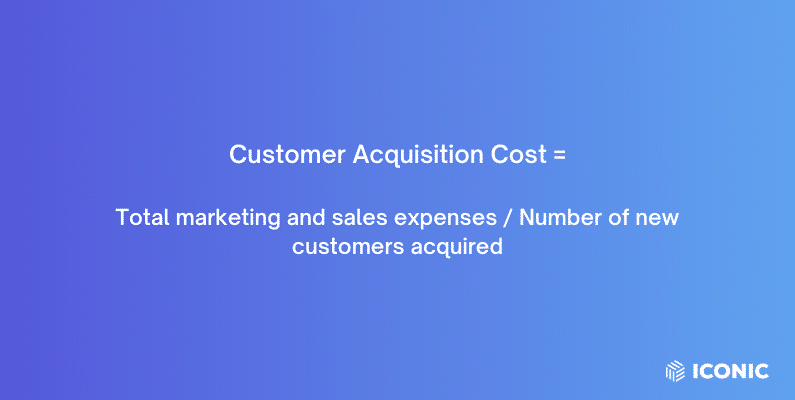
How to calculate your customer acquisition cost?
To calculate your customer acquisition cost, use the following formula:
Customer Acquisition Cost = Total marketing and sales expenses / Number of new customers acquired
For example, let’s say you spent $5,000 on marketing and sales efforts in a given period and acquired 100 new customers.
Your customer acquisition cost would be: $5,000 / 100 = $50
Tips for reducing customer acquisition cost
Although this is the last metric on the list, reducing this will maximize your marketing ROI. Use your marketing dollars more efficiently than pumping out ads to attract new customers.

Consider implementing the following strategies:
- Refine targeting strategies: Narrow your target audience and focus your marketing efforts on the most valuable customer segments. Knowing who your primary audience is and how to target them will increase your conversion rate and reduce your acquisition cost.
- Optimize ad campaigns: Review your marketing campaigns regularly to see if they perform at their best. Test ads, targeting options, and bidding strategies to identify the most cost-effective approaches.
- Leverage organic marketing channels: Engage with organic marketing channels such as content marketing, search engine optimization (SEO), and social media marketing. This will attract potential customers without spending money on advertising.
- Encourage customer referrals: Implement a referral program to reward existing customers for referring new customers to your store. Word-of-mouth is king when it comes to acquiring new customers.
- Improve customer retention: Focus on customer retention for higher profitability and lower customer acquisition costs. Nurture your existing customers and encourage repeat purchases to reduce the need to find new customers to drive revenue.
Utilize ecommerce metrics in your online store today
So, there you have it – the five big ecommerce metrics that can really give you the lowdown on how your business is doing and where it’s headed. Of course, there are more metrics out there, but starting with these five will put you on the right track.
But hey, don’t stop there! If you’re all set to put everything you’ve learned here into action, why not join our Iconic’s All Access Club? As a member, you’ll get your hands on top-of-the-line WooCommerce plugins. These tools are crafted to boost your online store in all sorts of ways.
Remember, using data smartly and choosing the right tools are your keys to success in ecommerce. So, take the driver’s seat, join the All Access Club, and steer your online business toward growth.
Join the All Access Club
Increase conversions & optimize your store with access to every plugin we make now and in the future.

